For his first solo show in France at the Musée d’Art Contemporain de Bordeaux CAPC, Guatemalan artist Naufus Ramírez-Figueroa, is exhibiting an experimental symbiosis of Enlightenment practices. Namely, the domestication and breaking of the New World.
By Carolina Martínez Sánchez | Images: Courtesy of Musée D’Art Contemporain de Bordeaux CAPC Photography: Arthur Péquin | Special thanks to Wingston González
The other. Otherness. Me. You. No one.
Science. Spirits. Colors.
Let’s start all over again.
The friction between two parts is often seen as an encounter of oppression, but it can also emerge from the clash and its subsequent coupling, a strange existence. And it can happen that this result is also adorned with elements that are found at different times and places.
Naufus Ramírez-Figueroa has known this transforming friction (which led him and his family to emigrate from Guatemala to Canada) in morphic and symbolic displacements full of color where they can quote naive aesthetics and baroque art or manual labor of children to speak about cultural, social or political clashes. The civil war in Guatemala, which lasted from 1960 to 1996 had antecedents in the history of Western Industrial schemes and later in the Cold War. This is latent throughout his work and is a referent for telling other stories.
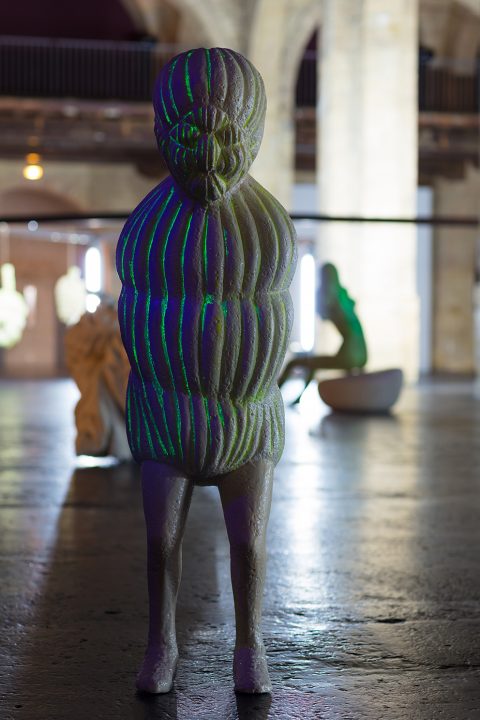
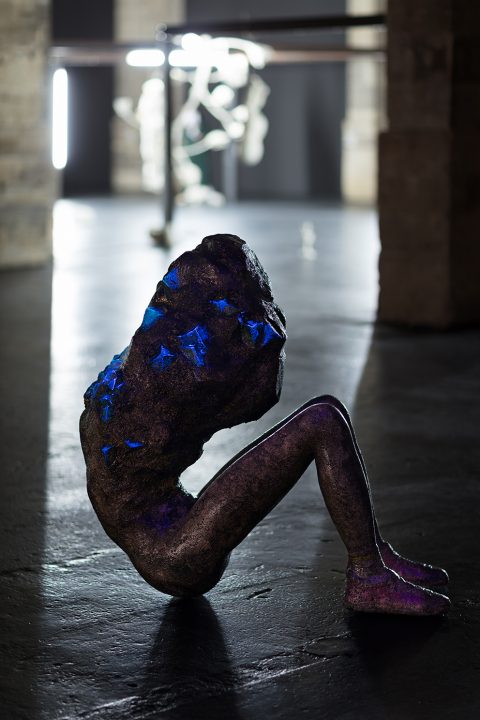
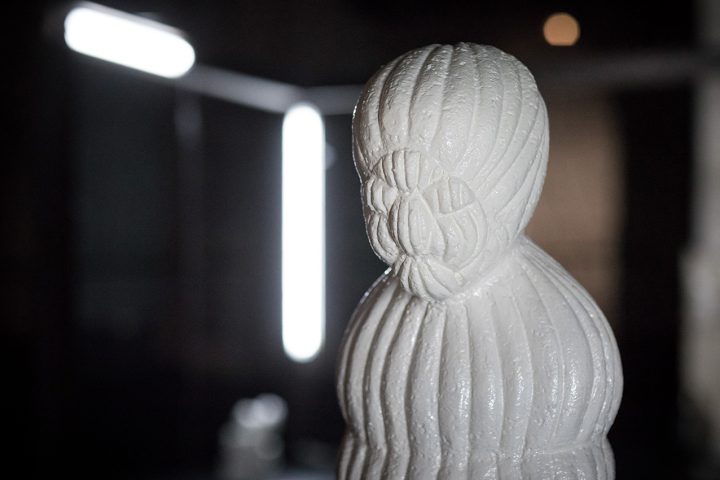
“Linnæus in Tenebris” is the first solo show of the Guatemalan artist in France, on view until September 24, 2017, at Musée d’Art Contemporain de Bordeux CAPC, curated by Alice Motard, and was accompanied at the vernissage with a performance by Juan Maldonado and Wingston González, a fellow writer from Ramírez-Figueroa, who is also the author of “La playa espera por vos”, a text edited specially for this occasion.
Carl von Linné,born as Carl Nilsson Linnæus and translated to Latin as Carolus Linnæus, was a biologist, botanist, naturalist and zoologist, among other scientific disciplines. He is known as the father of the modern taxonomy and ecology as well as the creator of the binominal nomenclature system for the vegetable, animal and mineral kingdom. Linnæus is embodied in his work of 1735 “Systema Naturæ”, where he said that the creation of God would be classified. This system, based on his studies in European lands, has been used and exported throughout the globe, which implies not only a political imperialism, but also one transferred to science and nature from other places, which would have nothing to do with its classification. “Linnæus in Tenebris” (Linnaeus in Darkness) is presented to us as an installation of flaps and inserts that become mutants and spectacular polystyrene forms dipped in resin as exotic species.
Exotics is presented as a new idea of multitude, not just built of one part, “the One.” An experimental symbiosis of the crossing and imposition of a reality imposed by the Enlightenment. The domestication and breaking of the New World.
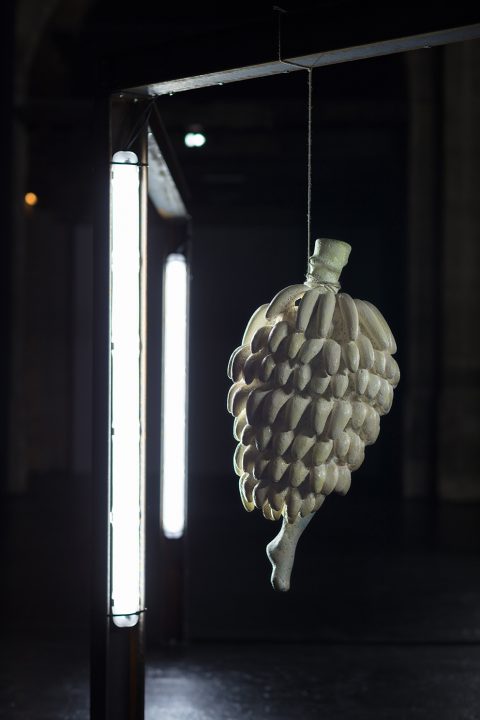
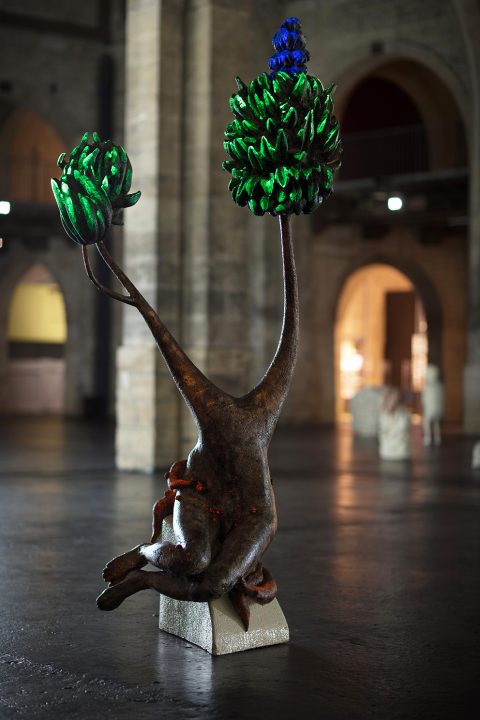
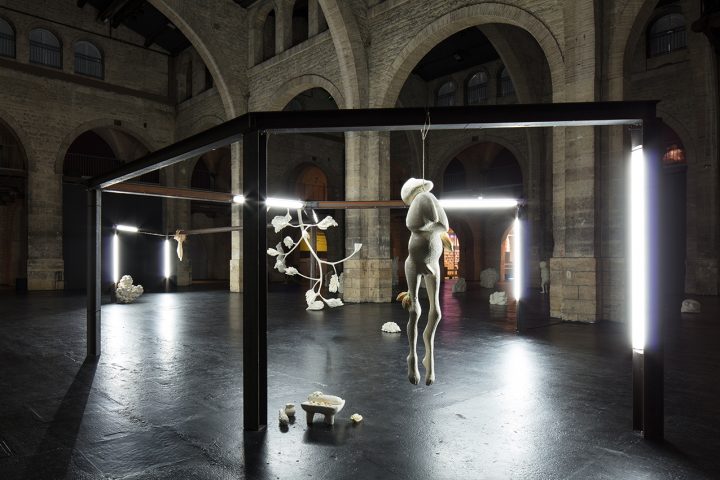
Flowers and banana trees glow and surprise with one leg. Torsos of human figures rise up to become tropical fruits. Some other forms remind us of many things, but without knowing what exactly. Bananas, arms. Plants in fluorine. Anthropomorphic sculptures fused with the vegetable kingdom and distributed through the dark Central Nave of the Museum, are arranged as experiments of some strange laboratory, where they can be inspected by the visitors who are framed by structures with halogen lights that illuminate these creature-species of the nature of the intervention.
Naufus reminds us how the mutations of unnatural couplings refer to an attempt to homogenise individuals. The particularities of each one of them have been forgotten, and where one of the parts always establishes the other one not as its equal, but oppresses from absorption. If that is the constant destiny for clashes from different parts, how is it possible today thinking of a world in flux and exchange that operates based on prudence?
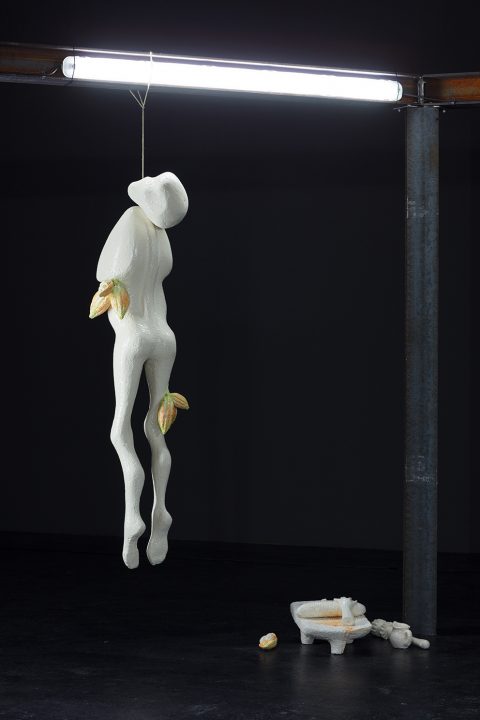
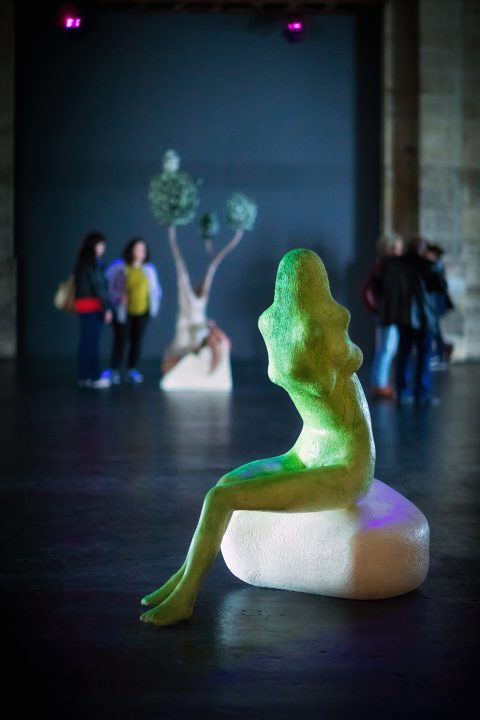
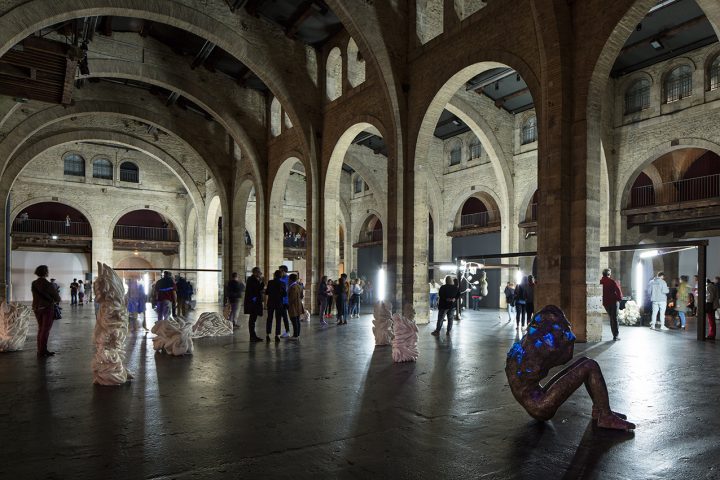
According to the structure of aesthetic models or paradigms of artistic practices of Luis Camnitzer, where the periphery is confronted with the mainstream, often a docile domestication slips by silently – the return of a gelatine whose molecular composition is not entirely clear. If this is presented to us as a seductive monster, then we do not know how answer it. The formal works utilise metaphor and condensation where language is trapped in this domestication and remains trapped in this beach that we call the animal kingdom. Escape, language and power.
La Playa espera por Vos (The beach awaits for you)
By Wingston González
habrían de verme
cielo en alta
joven
bello
y caro a la luz.
nunca privilegio
más
cielo en alta
joven
bello
y caro a luz
*
y una risa estupenda.
*
«soberbias
las ruinas, decían
niños a mi paso.»
*
«pocas noticias de lugar y fuente / little news of place and source
de aparición y desembarco / of emergence and landing. appear
aparece airado franky / ing angry franky, dissuaded
disuadida la vibración total y filosa / the vibration whole and sharp
marea / tide
de vestirse en este cúmulo / of dressing in this cumulus
aire marea y doblaje / air, tide and dubbing
aire marea y doblaje: / air, tide and dubbing: face to face
cara a cara el asombro / the astonishment
nos reconoce / recognizes us»
*
alojo en casa del aire al verbo tempestivo,
una casa verde oscura oscura oscura oscura
madera dark dark dark dark wood
casa de ventanas sober sober sober sober
sábana de espumas white white white white
ventanas
un agente who has come to the beach
a
leve leve leve vibración de campanas
*
a solid scratch on the boats
*
impregna, r lila lila lila vibración de las campanas
like an empty device
like an empty device
like an empty device
like an empty device
*
so , y vasija rasguñada by dream
*
compartimento impregnado
leve leve leve vibración de campanas, la lila lila lila señal del rasguño
*
veo
dos fuentes:
*
«esto , y dentro para sed
ciega ciega ciega ciega extensión de fauna;
esto , y así adentro para / and i’m here
domesticar el incendio / to sharpen blades
de símbolos en el mundo / in the shadow of language
dulled by the heads of mountains»
*
i see
two fountains:
*
«y estoy
para afilar hojas
en la sombra del lenguaje
deslucido por las cabezas de los montes»
*
veo
dos fuentes:
*
renounced you renounced
*
renounced a vos y a la membrana
*
‘e renunciado a vos ‘e renunciado
*
ardiente rises el mediodía
*
like a plectrum the evening peaks
*
like a branch appears the night
*
i’ve renounced you i’ve renounced
*
and roads and towns and phantoms
*
«the potency of the escape»
we call
*
a esto llamamos la potencia de la huida
*
we call this the potency of escape
*
a esto llamamos el reino animal
*
i’ve renounced you i’ve renounced
*
drowsy like a venom
*
eyes awaken upon reuniting with air
*
a esto llamamos, el reino animal
we call this, the animal kingdom
*
we call this, the animal kingdom
*
we call this, the potency of escape
*
¿ya había chopo? / was there already poplar?
¿dioses de sangre y cenizas? / gods of blood and ashes?
¿espíritus sostenidos? / spirits sustained?
¿en lengua de fuego? / on tongue of fire?
¿partículas ardientes? / particles burning?
¿desde la altura de las brasas? / from the altitude of embers?
*
el espacio avanza hacia vos
dicción de luna y grava
un ardiente pozo en la oscuridad fue mi tejido
*
«¿este es el camino a némesis?»
preguntamos en tu aldea
«¿qué hace un verbo buscando némesis?»
*
tu piel bronceada y tus ojos
amordijeron
aves extintaspalpitantes
sombras envenenadas
por
mundo de lejos
amor y extranjero
mundo lejos
*
no borrará
los nombres de su memoria
un dios
que sabrá reunirnos
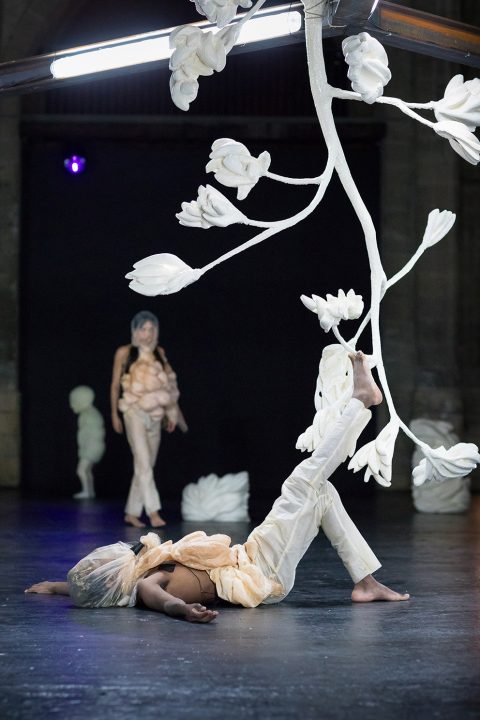
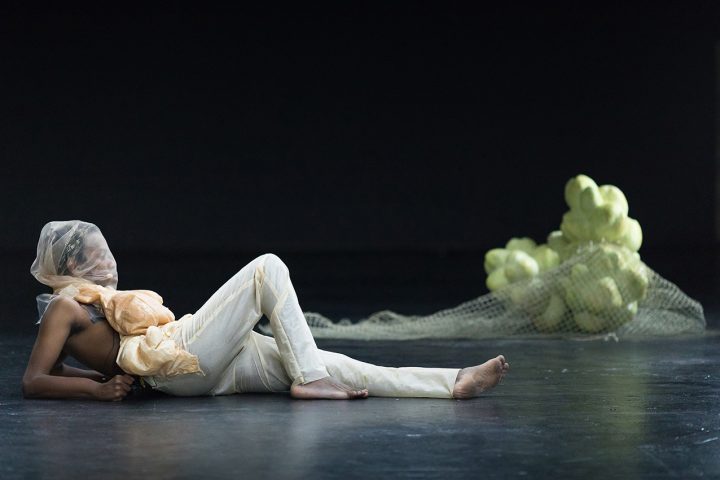
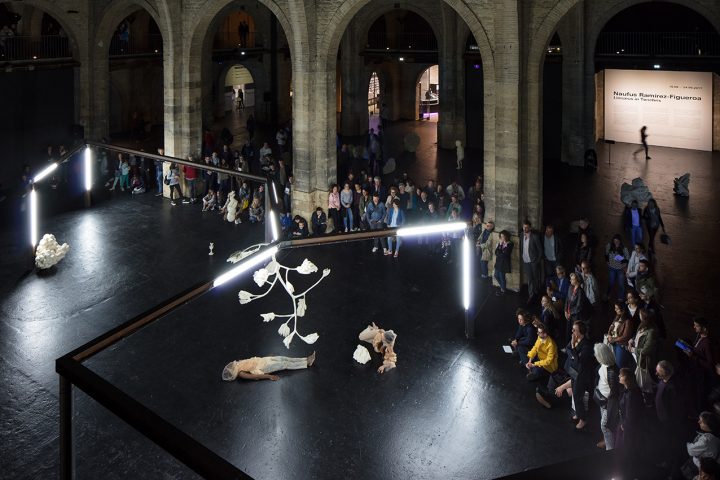
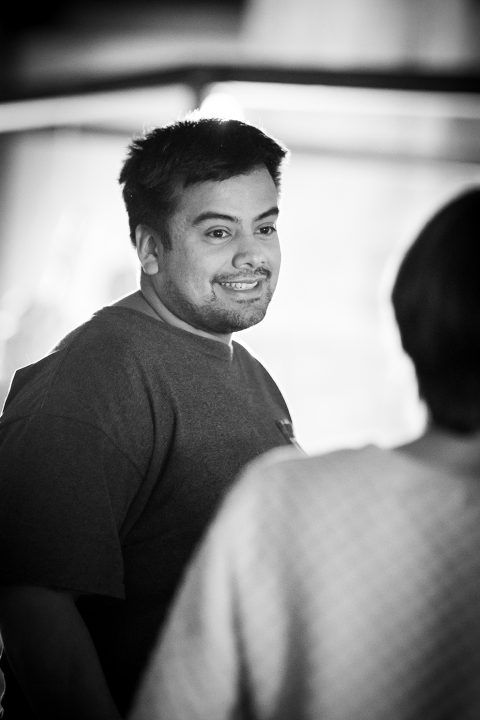

 Español
Español